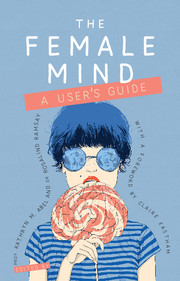Book contents
- Frontmatter
- Acknowledgements
- Contents
- Foreword
- Introduction: being female
- Part I Women in perspective
- Part II Women and society
- Part III Women and their environment
- Part IV Women and specific disorders
- 18 Depression and other mood disorders
- 19 Anxiety disorders
- 20 Trauma and post-traumatic stress disorder
- 21 The dangers of rumination
- 22 Obsessive–compulsive disorder
- 23 Eating disorders and body dysmorphic disorder
- 24 Psychosexual disorders
- 25 Personality disorders: risks and recovery
- 26 Self-harm
- 27 Women and addiction
- 28 Autism spectrum disorder
- 29 Attention-deficit hyperactivity disorder
- 30 Psychotic illness
- 31 Postnatal depression and postpartum psychosis
- 32 Living longer: normal age-related changes, dementia and depression
- Part V Women and treatment
- Contributors
- Index
29 - Attention-deficit hyperactivity disorder
from Part IV - Women and specific disorders
Published online by Cambridge University Press: 02 January 2018
- Frontmatter
- Acknowledgements
- Contents
- Foreword
- Introduction: being female
- Part I Women in perspective
- Part II Women and society
- Part III Women and their environment
- Part IV Women and specific disorders
- 18 Depression and other mood disorders
- 19 Anxiety disorders
- 20 Trauma and post-traumatic stress disorder
- 21 The dangers of rumination
- 22 Obsessive–compulsive disorder
- 23 Eating disorders and body dysmorphic disorder
- 24 Psychosexual disorders
- 25 Personality disorders: risks and recovery
- 26 Self-harm
- 27 Women and addiction
- 28 Autism spectrum disorder
- 29 Attention-deficit hyperactivity disorder
- 30 Psychotic illness
- 31 Postnatal depression and postpartum psychosis
- 32 Living longer: normal age-related changes, dementia and depression
- Part V Women and treatment
- Contributors
- Index
Summary
Ruth's story
Ruth is a 32-year-old woman. She left school at 16, having got into trouble for not working hard enough, arguing and getting into fights with other girls. She had a stormy relationship with her mother, who said she was a difficult child, ‘into everything and could have done better if she had tried’. She has lost several jobs in retail for getting angry with customers, but more recently has enjoyed working as a gardener in a small firm. She is disorganised at home, struggling to keep on top of things, and this resulted in her relationship ending. Her 7-year-old son was getting into trouble at school, has dyslexia and has recently been diagnosed with attentiondeficit hyperactivity disorder (ADHD). Medication has helped him in his school work and his behaviour at school and at home. She asked her general practitioner (GP) for referral to an adult ADHD specialist, and was subsequently diagnosed with ADHD, which made a lot of sense to her. She tried medication but, although this helped, it also caused sideeffects. She has read a lot about ADHD and manages her symptoms better as a result of developing better coping strategies, and by avoiding or planning for situations that might cause conflict.
ADHD stands for ‘attention-deficit hyperactivity disorder’. You might also have heard of the terms ‘hyperkinetic disorder’ or ‘attention-deficit disorder’. These all describe a similar condition, in which people have difficulties with concentration and focusing and can be overactive.
The symptoms of ADHD are similar in women and men, and it is diagnosed and treated in the same way for most people. There is some evidence that women are less likely to have hyperactivity symptoms and predominantly experience problems with concentration and attention. Women are diagnosed with ADHD four times less often than men, although we do not know whether this reflects a real difference in prevalence or whether ADHD is simply recognised less often in women.
ADHD is a developmental disorder, which means it starts in childhood and often continues into adult life. It is not usually diagnosed before 6 years of age, as many children below this age are naturally very active and cannot focus on things for a long time.
- Type
- Chapter
- Information
- The Female MindUser's Guide, pp. 188 - 194Publisher: Royal College of PsychiatristsPrint publication year: 2017



